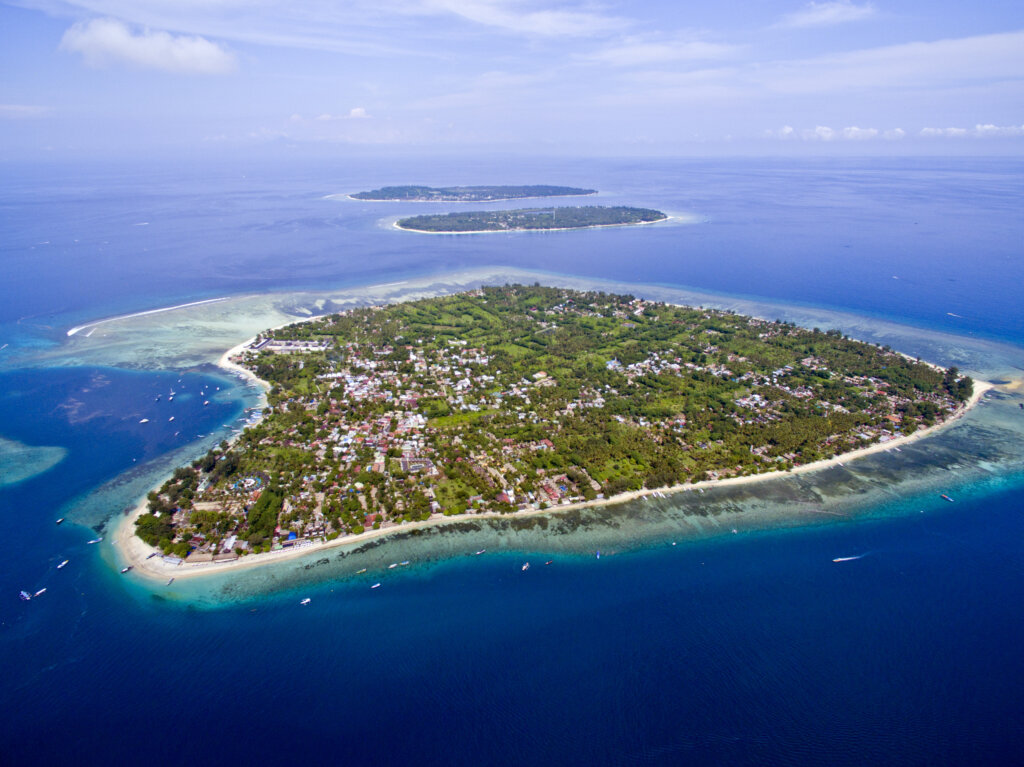
IA-1 successfully launched using a Falcon 9 rocket at 6:21 PM from the Cape Canaveral Space Launch Complex 40 (SLC 40) in the U.S. on Sunday (18/6/2023). (ANTARA/Livia Kristianti/aa)
SATRIA-1 to provide satellite-based internet for Indonesia’s 3T region
|
Getting your Trinity Audio player ready... |
- Internet connectivity in Indonesia still a major hurdle.
- Indonesia launched its first satellite, SATRIA-1 to improve internet connectivity.
Providing internet connectivity across the thousands of islands that make up Indonesia is a challenge.
According to statistics, Indonesia has one of the highest number of internet users in the world. However, the internet penetration rate in the country is still one of the lowest in Asia. The country continues to experience significant growth in its GDP thanks to its e-commerce market which is expected to reach US$46.92 billion this year.
While the main islands of Jawa, Sumatra and Bali have strong internet connectivity, most of the smaller islands that surround them don’t have the same luxury. These areas are referred to as 3T which are the frontier, outermost and least developed regions.
The main reason for this is the high costs of building the infrastructure to support the network in these areas. The development progress is also not matched by the equitable distribution of income across the nation.
To solve connectivity issues in remote areas like the islands in the Papua region, the government has worked with telco service providers to offer satellite-based internet service to the people there.
Improving internet connectivity in Indonesia through satellite-based internet
After years of planning and development, the republic finally launched its first satellite, SATRIA-1 from the Cape Canaveral Space Launch Complex 40 in the US. The satellite launch is an effort to equalize development and includes the Indonesian public in the digital economy with the provision of internet in the 3T regions and in the country. SATRIA-1 will cover the entire Indonesian territory, including remote areas.
“This first Indonesian satellite, SATRIA-1, aims to distribute internet access evenly, particularly for purposes of education, medical, public services, the military and the police force,” said acting Communication and Informatics Minister Mahfud MD.
The satellite was launched using American-based private spacecraft manufacturer and launch company Space X’s Falcon 9 rocket. The launch runs for about ten minutes and SATRIA-1 will head to the orbit point at 146O of East Longitude.
“It was a great achievement and success, thanks to the support of all Indonesian people,” the acting president director of Telecommunication and Information Accessibility Agency (BAKTI), Arief Tri Hardiyanto, said at Kennedy Space Center, Florida after the launch of the first internet satellite owned by the Indonesian government.
Orbital launch no. 91 of 2023 🇺🇲🚀 🇮🇩🛰️
Satria 1 | SpaceX | June 18 | 2204 UTC@SpaceX to launch #Indonesia‘s telecom🛰️ #SATRIA1 ,built by @Thales_Alenia_S for Pasifik Satelit Nusantara, on top of its #Falcon9 #B1067.12🚀 from @SLDelta45 SLC-40 to GTO.#SpaceX #Pasifik… pic.twitter.com/P9nGKasH8M
— Space Intelligence (@SpaceIntel101) June 18, 2023
After arriving at the orbit, PT Pasifik Satelit Nusantara (PSN) along with Thales Alenia Space (TAS) will conduct In-Orbit Testing of the satellite for three weeks to ensure the function of the satellite. The next phase of the satellite operating series is the In-Orbit Acceptance Review (IOAR) which is scheduled to be held in the first week of December 2023.
The Ministry of Communication and Informatics (KOMINFO) will monitor SATRIA’s internet service quality. It hopes Indonesians will be able to utilize the internet capacity of SATRIA-1 gradually starting in January 2024.
The satellite has been built by the government since 2019 to provide equal internet access in public facilities, specifically in the 3T regions. According to the ministry’s latest study in 2023, the 150-Gbps capacity SATRIA-1 will provide expanded broadband coverage to 50 thousand public facility points in 3T regions connected to the internet.
It will provide equal internet access for public facilities in 3T regions, such as schools, hospitals, community health centers, village offices, and sub-district offices, as well as security services. The internet speed in each of these points will reach 4 Mbps, which is four folds higher than the previously projected speed of only 1 Mbps for every point in 2018.

Satellite-based internet can improve connectivity to the many remote islands in Indonesia. (Source – Shutterstock)
The rise of satellite-based internet
In addition to SATRIA-1, the ministry will launch Hot Backup Satellite (HBS) in the third quarter of 2023. The Communication and Informatics Ministry stated that satellites are the best and quickest choice for equitable internet distribution in Indonesia.
Apart from SATRIA-1, several other companies are also hoping to provide satellite internet to the country. For example, Starlink is already offering its internet services in the country. Launched earlier this year, the satellite internet service may not be as cheap as the ones being offered by SATRIA-1 in rural areas but is getting significant demand in urban areas in the country.
SES is another company that is hoping to provide satellite-based internet to the Indonesian archipelago as well. SES is already known for its internet services to remote islands in the Pacific and with the recent launch of its next-gen constellation satellites, the company hopes to play a bigger role in connecting remote locations in Indonesia.
READ MORE
- Safer Automation: How Sophic and Firmus Succeeded in Malaysia with MDEC’s Support
- Privilege granted, not gained: Intelligent authorization for enhanced infrastructure productivity
- Low-Code produces the Proof-of-Possibilities
- New Wearables Enable Staff to Work Faster and Safer
- Experts weigh in on Oracle’s departure from adland


